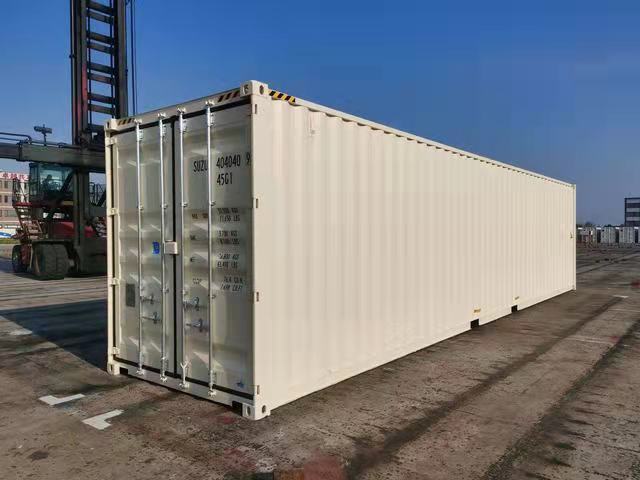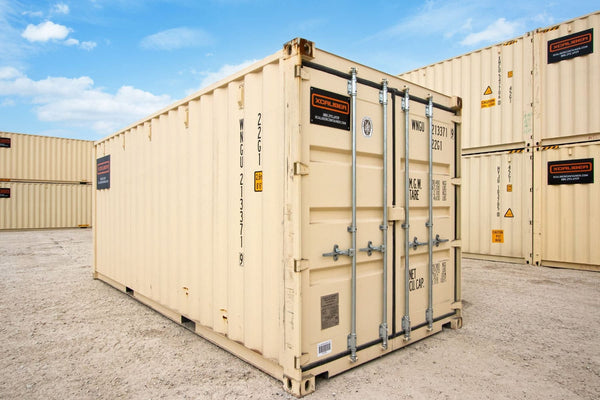The Ultimate Overview to Selecting the Right Shipping Container for Your Demands
When it concerns picking the right shipping container, understanding your particular demands is important. You'll desire to think about aspects like dimension, kind, and material to guarantee you make the best choice. From conventional dimensions to specialized choices, there's a whole lot to discover. Plus, budgeting for both the container and any adjustments can make a big difference. Allow's break down the crucial facets to assist you locate the excellent fit for your requirements.
Understanding Delivery Container Sizes
When you're selecting a delivery container, recognizing the different sizes available is crucial for making the appropriate decision. Shipping containers usually can be found in basic sizes of 20 and 40 feet, but you'll also discover various other dimensions. Recognizing the dimension you need depends upon what you intend to store or transport.If you're relocating smaller items, a 20-foot container could be ideal, while larger deliveries commonly call for a 40-foot container. The elevation can likewise vary; high dice containers provide extra upright space, which can be advantageous for taller goods.Before deciding, determine your cargo, and consider just how much room you'll need for packing and dumping. Always consider possible future needs-- going with a slightly larger container may save you problem down the line. Ultimately, picking the best dimension will improve efficiency and guarantee your products are safe and secure during transit
Kinds Of Delivery Containers Available
There are a number of sorts of delivery containers readily available, each designed for particular purposes and cargo demands. The common dry container is versatile, excellent for general cargo. If you're delivering perishable goods, take into consideration a chilled container, which preserves a controlled temperature. For oversized products, high cube containers use added elevation, suiting taller loads.If you need to carry heavy equipment or devices, level shelf containers offer a durable base without wall surfaces. Open-top containers permit for simple loading of tall cargo, with a detachable tarpaulin covering for security. If you're searching for versatility, consider a retractable container that can be conveniently kept when not in use.Lastly, specialized containers like storage tank containers are used for fluids, while vented containers are designed for bulk cargo that requires air flow. Understanding your freight type will aid you pick the appropriate container to satisfy your shipping needs effectively.
Material Considerations for Longevity
When selecting a delivery container, the product plays a crucial role in its longevity. You'll wish to evaluate the benefits of steel versus light weight aluminum, especially pertaining to rust resistance. Recognizing these aspects can aid you make a more educated selection for your shipping requires.
Steel vs. Light weight aluminum Containers
How do you pick between steel and light weight aluminum containers for your shipping needs? Start by considering sturdiness. Steel containers are durable and deal excellent stamina, making them excellent for heavy tons and extreme conditions. They stand up to damage from influences and are usually less expensive, which can be a major aspect for budget-conscious buyers.On the various other hand, aluminum containers are light-weight, which can save you on delivery expenses. They're less complicated to navigate and are a terrific option if you need to carry products often. Nevertheless, aluminum is usually extra pricey and much less robust than steel. Evaluate your particular demands very carefully, including weight, cost, and the kind of freight you'll be shipping, to make the appropriate choice for your situation.
Deterioration Resistance Factors
Choosing the right product doesn't simply include weight and expense; deterioration resistance plays a substantial role in longevity. When picking a shipping container, take into consideration the setting it'll encounter. Steel containers, while strong, can corrosion otherwise appropriately treated. Try to find alternatives with safety layers or galvanization to boost their life expectancy. Light weight aluminum, on the other hand, supplies natural rust resistance, making it ideal for coastal areas or moist conditions. However, it can be extra costly. Furthermore, assess the container's use-- if it'll be exposed to chemicals or harsh climate, focus on materials that can stand up to these conditions. Purchasing a corrosion-resistant container currently can save you from pricey repair work or replacements down the line. Choose wisely for long-term benefits.
Modifications and Customization Options
Shipping containers aren't just for moving products; they can be changed to satisfy your certain requirements via different alterations and customization options. You can transform a conventional container right into a comfortable office, a temporary retail shop, or also a personal gym. The possibilities are nearly endless.Think about adding windows, insulation, or air flow to enhance convenience. You could also think about electric circuitry, plumbing, and even custom shelving to enhance capability. If safety and security's a concern, strengthened locks can provide tranquility of mind.For visual allure, you can paint the container or include a special style to make it stand apart. Don't forget floor covering choices-- whether you desire resilient plywood or something more sophisticated, it can raise the space.Ultimately, tailoring your shipping container to fit your needs can improve usability and produce a distinct atmosphere that shows your design.
Evaluating Your Transport Requirements
When it concerns utilizing your modified delivery container, understanding your transportation requires is key. Beginning by determining what you'll be shipping-- whether it's heavy devices, retail items, or personal things. Each type of cargo has various demands regarding dimension, weight, and accessibility.Next, consider the range and mode of transportation. Are you shipping in your area, country wide, or globally? This influences the container's layout and functionality. If you're utilizing trucks, assure your container fits conventional dimensions for very easy loading and unloading.Additionally, believe regarding transportation conditions. Will your items need site special protection from weather or temperature level fluctuations? If so, you might require insulation or air flow features in your container.Lastly, assess exactly how commonly you'll be carrying items. Regular deliveries might need an extra sturdy and functional container to satisfy continuous demands. By addressing these variables, you'll be well-prepared to pick the best shipping container for your demands.
Budgeting for Your Delivery Container
Establishing an allocate your shipping container is necessary for making certain a smooth acquiring process. Figure out exactly how much you can manage to spend. Costs can differ substantially based on dimension, condition, and kind. New containers commonly set you back a lot more, but used ones can offer substantial savings.Next, consider any added costs you might sustain, such as transport charges, shipment charges, and modifications. If you intend to customize the container, factor in those expenditures also. Study different suppliers to contrast prices and discover the very best bargain that meets your needs.Don' t neglect to include any kind of authorizations or regulations that may put on your acquisition and use the container. By clearly outlining your budget plan, you'll be much better prepared to make informed decisions, ensuring you get the right container without damaging the financial institution.
Maintenance and Look After Durability
To ensure your delivery container lasts for several years, routine upkeep is key. Begin by examining the exterior for rust, damages, and damages. If you find any type of problems, address them immediately to stop additional damage. Clean the container periodically, both throughout, to get rid of dust, particles, and wetness that can bring about corrosion.Ensure the doors seal correctly and oil the hinges to avoid rust and sticking. If you're making use of the container for storage, consider adding air flow to decrease moisture and mold growth. For additional defense, apply a rust-inhibiting paint or sealer annually.If your container's located in a harsh setting, like coastal areas, you might require to increase upkeep regularity. Maintain an eye on the flooring, as well; any signs of wear should be fixed right now. With these straightforward steps, you'll extend the life of your delivery container significantly.
Often Asked Questions
Just how Do I Locate a Reliable Shipping Container Supplier?
To locate a trustworthy shipping container supplier, beginning by researching online reviews, requesting for suggestions from pals or industry contacts, and comparing prices. Always check their qualifications and guarantee they provide quality containers that fulfill your requirements.

Can I Rent a Delivery Container Instead of Buying?
Yes, you can definitely rent a shipping container instead of getting one. Several distributors supply you could try this out rental options, which can save you cash and provide adaptability if you just require it for a short period.
What Allows Are Needed for Container Placement?

Are Delivery Containers Weatherproof and Appropriate for Outdoor Storage Space?
Yes, shipping containers are usually weatherproof, created to endure severe conditions. Their durable building and construction maintains your things protected and completely dry, making them appropriate for exterior storage space. Just ensure appropriate air flow to protect against moisture build-up inside.